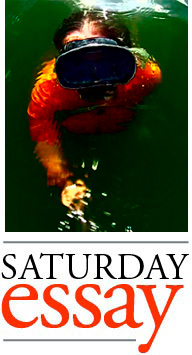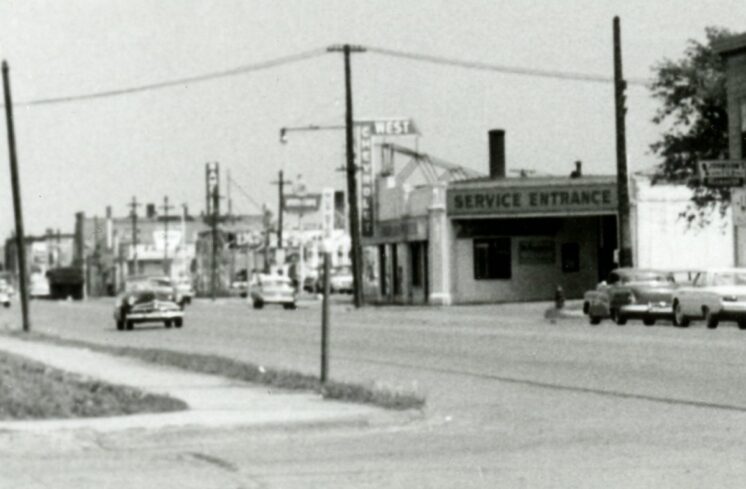Mystery Photo: McDowell Sisters
This old cabinet card photo, for sale on eBay, was shot in Duluth. Several details are provided, but some mysteries persist.
This old cabinet card photo, for sale on eBay, was shot in Duluth. Several details are provided, but some mysteries persist.

Duluth Public Library in the November 1980 issue of Architectural Record.
Last month, an article appeared in the Duluth News Tribune about the decision to demolish the Duluth Public Library and replace it with something smaller in a shared building. The reasons provided for demolition instead of restoration mostly involve challenges to reprogramming and subdivision created by structural pillars, expensive building systems like insulation in serious need of replacement, and other issues related to years of deferred maintenance.
 Excerpts from Scions of Cloquet by Jean-Michel Cloquet (1946, out of print)
Excerpts from Scions of Cloquet by Jean-Michel Cloquet (1946, out of print)
“In 1820, when he was 17 years old, the Frenchman Pierre Cloquet boarded a packet ship in Le Havre and sailed across the Atlantic Ocean. He was trying to escape his father, like many of us try to do, perhaps all of us. He just wanted a little peace and quiet. By a certain measure, he found it in the territory eventually known as Minnesota. Pierre (or Grandpère Cloquet as my brother and I refer to him) became a legendary voyageur and fur trader 20 miles southwest of Duluth, trapping, hunting, and occasionally bear-wrestling. Over two decades of working for the American Fur Company, he built his own trading post where metal tools shipped in and beaver pelts shipped out. He gradually adopted native dress, and he married into a Black-Ojibwe family out of Michigan, sought-after guides and translators. And, right around the collapse of the beaver pelt industry in 1843, he inadvertently founded the town of Cloquet.
The postcard above, and the one below, were both published by Gallagher’s Studio of Photography circa the 1950s. And both were made to promote Bill’s Mount Silver Motel and Cabins on Silver Cliff Bay, northeast of Two Harbors. The location now features private residences.
The Twin Ports area has long been a literary center for Minnesota. Now, the history of the literary community in Duluth is open and available to researchers and readers alike in the Archives and Special Collections of the Kathryn A. Martin Library at the University of Minnesota Duluth. The Poet Laureate Program is the heart of a collection of materials available to the public.
Dave Wilton at wordorigins.org delves into a famous-though-probably-inaccurate Mark Twain quote in his latest article. “The coldest winter I ever spent was a summer in San Francisco,” has of course also been spun as “The coldest winter I ever spent was a summer in Duluth.” Wilton covers it all in detail, as did Tony Dierckins some years ago on zenithcity.com. Lake Superior Magazine also covered the subject in 2003.
This 2013 Twin Cities Public Television documentary provides a few snippets related to the state’s northeast corner, including Duluth. The show was produced with the Minnesota Historical Society Press and inspired by the book Minnesota in the ’70s by Dave Kenney and Thomas Saylor.

The Arrow Chevrolet West was on the corner of Grand Avenue and 59th Avenue West — the modern-day location of City Center West. (Photo via University of Minnesota Duluth Archives and Special Collections)
I am looking for folks with information about either Duluth location of Arrow Chevrolet — West Duluth or Downtown.
Chevy dealers across the country were sponsors of the Soap Box Derby and I am hoping to get a few folks to respond with their memories of the Arrow Chevrolet clinics and parts distribution. Did you race the Soap Box Derby? What memories of the Chevy dealers do you have?
Sixty years ago today — Sept. 24, 1963 — President John F. Kennedy spoke in Duluth during the Northern Great Lakes Region Land and People Conference. The event was held in the University of Minnesota Duluth’s Physical Education Building.
During the Friends of the Library Book Sale at the Superior Public Library, I saw many things I’ve never seen before. I saw someone come by and buy all of the VHS tapes. (Luckily, I saw them before he did — there was nothing I liked.) I understand that there is a collector market for VHS, as movies that were never issued to DVD and will likely not be streaming are only found on that medium.
This century-old postcard shows the old YMCA building at Ogden Avenue and 14th Street in Superior. Though the card is postmarked, the year is not legible.
American architect and designer Frank Lloyd Wright designed many famous buildings, museums and houses — including a gas station in Cloquet. Twin Cities Public Television Reporter Kaomi Lee explores the architectural destination in this video.
It was on this date 140 years ago — Sept. 10, 1883 — that the first arrests were made in connection to a counterfeiting operation at a Duluth grocery store.